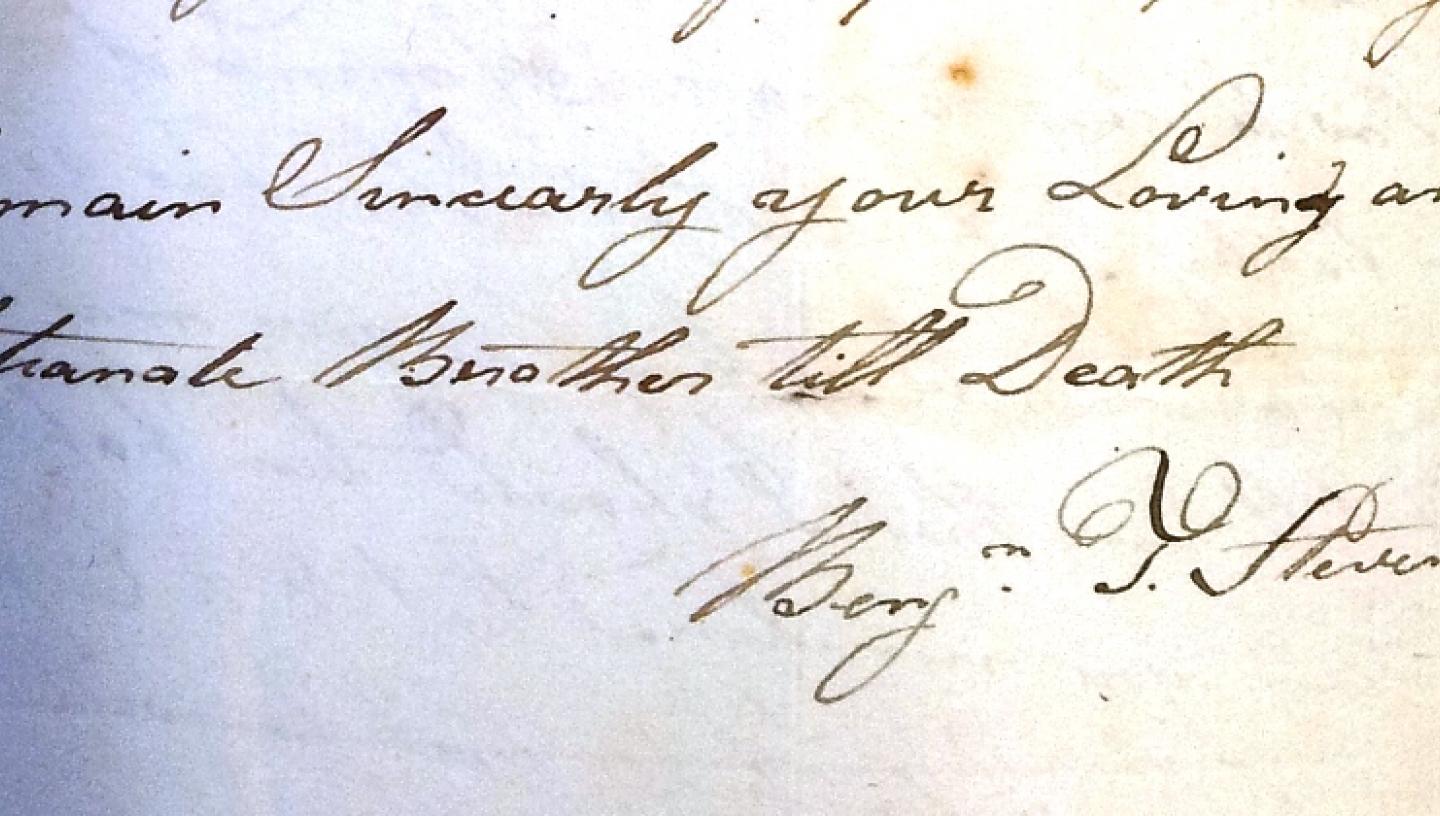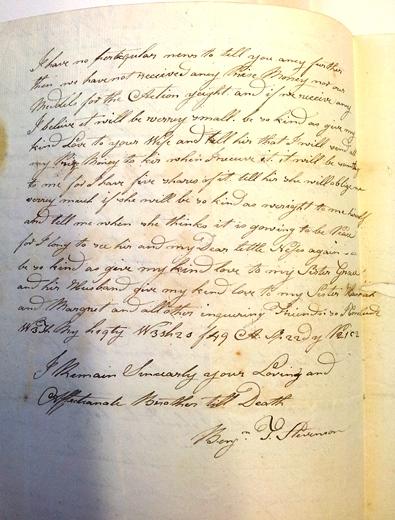
Essential Information
| Location |
National Maritime Museum
|
|---|---|
03 Nov 2016
Letters from common sailors of Nelson’s time are rare enough, but Benjamin Stevenson, a 22-year-old sailor on HMS Victory left 15 letters to his family.
Originally from Berwick, Stevenson was taken by a press gang in 1803. At the same time he had left his watch with a local watchmaker to be repaired. Possibly a gift from his wife, the timepiece clearly meant a great deal to him, and he would not allow his impressment, being over 2000 miles away in the Mediterranean, or war with France deflect him from his purpose, writing to his brother-in-law precise instructions for reclaiming it:
‘Brother if he asketh what marks there is on her you may tell him that my name is on the her inside works and B.C.S but ought within a heart in the ought side case below the Watch paper but I have not got the No of her Brother if he will not deliver her up to weright by return of post and I will weright to him mi self.’
Several letters later he was still asking his sister the same question:
‘Dear Sister I hope that you got my watch and all the rest of my clothes and if anything happens to me before we see one another again, you may done as you please with everything that belongs to me’.
Records show he was on the Victory at the time of Trafalgar, and his later letters discuss prize money he hoped to receive. Yet though the letters span the period 1804–12, there is no actual letter describing the battle. This always seemed a curious omission to me.

But a recent book has solved this little archival puzzle. Helen Watt and Anne Watkin’s Letters of Seamen in the Wars with France, 1793–1815 is a collection of over 250 surviving letters of the lower deck, drawn from archives all over the country. Together they represent a treasure trove of 18th century naval correspondence.
Pleasantly reviewing this new book, imagine my surprise when I came across an unfamiliar Stephenson letter dated Portsmouth 5 November 1805, now at the Portsmouth Museum of the Royal Navy.
The missing letter, undoubtedly extracted because it was Stephenson’s account of the battle of Trafalgar, actually has little to say about the battle. But written 18 months after the letter above, it does show the unfortunate sailor was still chasing his watch:
‘Dear Sister when you recieve this I hope that you will weright by return of post and let me know whither you got my Watch or not.’
It is evident from the letters that Stevenson remained in the navy until at least 1812. Although it is also evident that his sister back wrote regularly, there is no more mention of the watch. It’s intriguing to wonder if the mere matter of the battle of Trafalgar got in the way of his efforts to reclaim it.
Stephenson’s letters show that despite several years at sea and the significant events he was part of, his ties to shore remained stronger than his ties than to the naval community that became his life for at least eight years.
His literacy allowed him to maintain, and us to study those ties, and show that for at least one sailor, Trafalgar and the death of Nelson were far less meaningful than getting home to his family and reclaiming his treasured watch.
Martin Salmon, Archivist.
Find out more about the Caird Library and Archive
More about NMRN Portsmouth